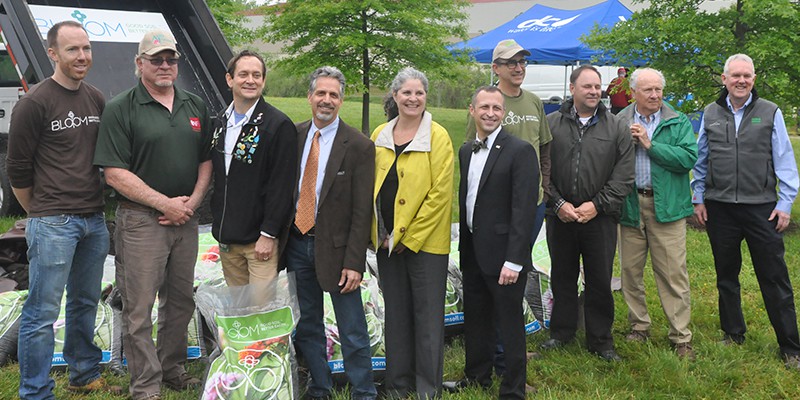THE LEAFLET

Something’s Blooming!
Imagine if you could turn waste into a renewable source of energy that can be used to help trees and other plants thrive?
That’s what D.C. Water has done with Bloom .
Bloom is the latest step in D.C. Water’s expedition with biosolids.
Biosolids are the organic materials that remain after D.C. residents send their used water to D.C. Water’s Blue Plains resource recovery facility. This used water is filtered down into four parts:
- Trash
- Clean water
- Renewable energy (they add high temperatures and pressure to the solids that come out of the treatment process to power a third of their plant)
- Biosolids (the organic material that remains after the above process)
D.C. Water was producing Class B biosolids for years. Most of it was sent to farmers down in Virginia for free; to be used on things like trees and sod. Farmers loved the free product and soon demand grew enough that they had a two-year waiting list.
However, this wasn’t the most resource or cost-efficient system. So after some research, they discovered the CAMBI system. The CAMBI system speeds the existing biosolids process and also creates much more methane-rich biosolids which plants and trees LOVE. D.C. Water convinced its board of directors to invest in building one of the largest CAMBI systems in the world.
After a few years of building, the CAMBI system came online and the result of this process is Bloom — D.C. Water’s first Class A biosolid. Unlike Class B, Class A biosolids can be used on anything, including fruits and vegetables.
The creation of Bloom makes the District one of few cities worldwide to use this process.
What’s even better is that Bloom will be used to help grow D.C.’s urban forest.
We have partnered with D.C. Water to use Bloom on all Casey Trees planted trees throughout the city. Bloom will be another method to ensure that our urban trees have all the nutrients and resources they need to not only survive, but thrive!